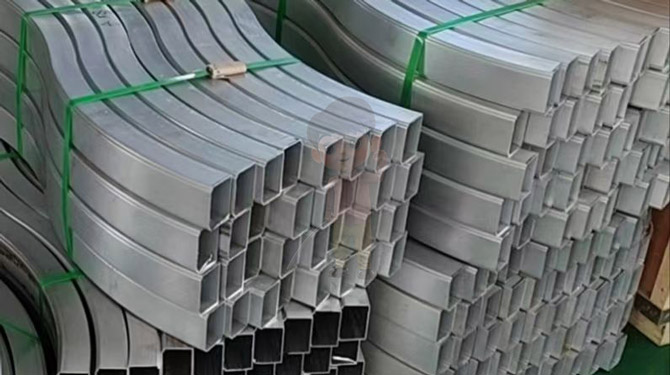Differences and characteristics between bending pipe processing and building profile processing
In the manufacturing industry, bending pipe processing and building profile processing are two common processing methods, which have certain differences in material selection, processing technology, application fields, etc.
1、 Material selection
1. Pipe bending processing
Bending processing mainly targets pipes, such as steel pipes, copper pipes, aluminum pipes, etc. These pipes usually have good corrosion resistance and mechanical strength, suitable for various fluid transmission and structural support.
2. Processing of building profiles
The materials involved in the processing of building profiles are more diverse, including steel, aluminum alloys, wood, plastics, etc. These materials are widely used in the construction industry, such as door and window frames, beams and columns, decorative panels, etc.

2、 Processing technology
1. Pipe bending processing
Bending pipe processing mainly includes two methods: cold bending and hot bending. Cold bending is the process of causing plastic deformation in pipes through mechanical force, and is suitable for processing small diameter and thin-walled pipes; Hot bending is the process of heating pipes to a certain temperature and then bending them, which is suitable for processing large diameter and thick walled pipes.
2. Processing of building profiles
The processing technology of building profiles is complex, including cutting, welding, assembly, surface treatment, etc. These processes need to be selected based on the specific purpose and design requirements of the profiles.
3、 Application Fields
1. Pipe bending processing
Bending pipe processing is widely used in pipeline systems, automobile manufacturing, shipbuilding, petrochemical and other fields. For example, in the petrochemical industry, bent pipes are used to transport fluids such as oil and natural gas.
2. Processing of building profiles
The processing of building profiles is mainly used for doors, windows, beams, columns, decorations and other parts in the construction industry. With the continuous development of construction technology, the application of building profile processing in architecture is becoming increasingly widespread.
4、 Characteristic analysis
1. Processing accuracy
Bending processing requires high precision, especially cold bending processing, which requires ensuring that the geometric dimensions and bending angles of the pipe meet the design requirements.
The processing of building profiles requires relatively low precision, but it is necessary to ensure the size, shape, and assembly accuracy of the profiles to meet the functional and aesthetic requirements of the building structure.
2. Material strength
Bent pipe processing materials usually have high strength to withstand pressure and impact during fluid transmission.
The strength requirements for building profile processing materials depend on specific applications, such as door and window frames requiring a certain degree of wind pressure resistance, while beams and columns require high load-bearing capacity.
3. Processing cost
The cost of bending pipe processing is usually higher due to factors such as materials, processing technology, and equipment.
The processing cost of building profiles is relatively low, but factors such as material transportation and construction installation need to be considered.
There are significant differences between bent pipe processing and building profile processing in terms of material selection, processing technology, and application fields. Understanding these differences can help us choose appropriate processing methods in practical applications, improve product quality and efficiency. With the continuous development of the manufacturing industry, these two processing methods will play a greater role in their respective fields.
24
2025-06
Number of visitors:1
HOT NEWS
-
Innovations in Door and Window Bending Processing: Key Techniques for Enhancing Product Quality
2025-11-01
-
A Guide to Equipment Selection and Maintenance for Precision Bending and Drawing Processes
2025-10-24
-
The Application and Challenges of Precision Bending in the Aerospace Field
2025-10-16
-
Material Selection and Performance Analysis of Special Profile Bending
2025-10-09




 English
English Chinese
Chinese Japan
Japan German
German

 LIST
LIST
